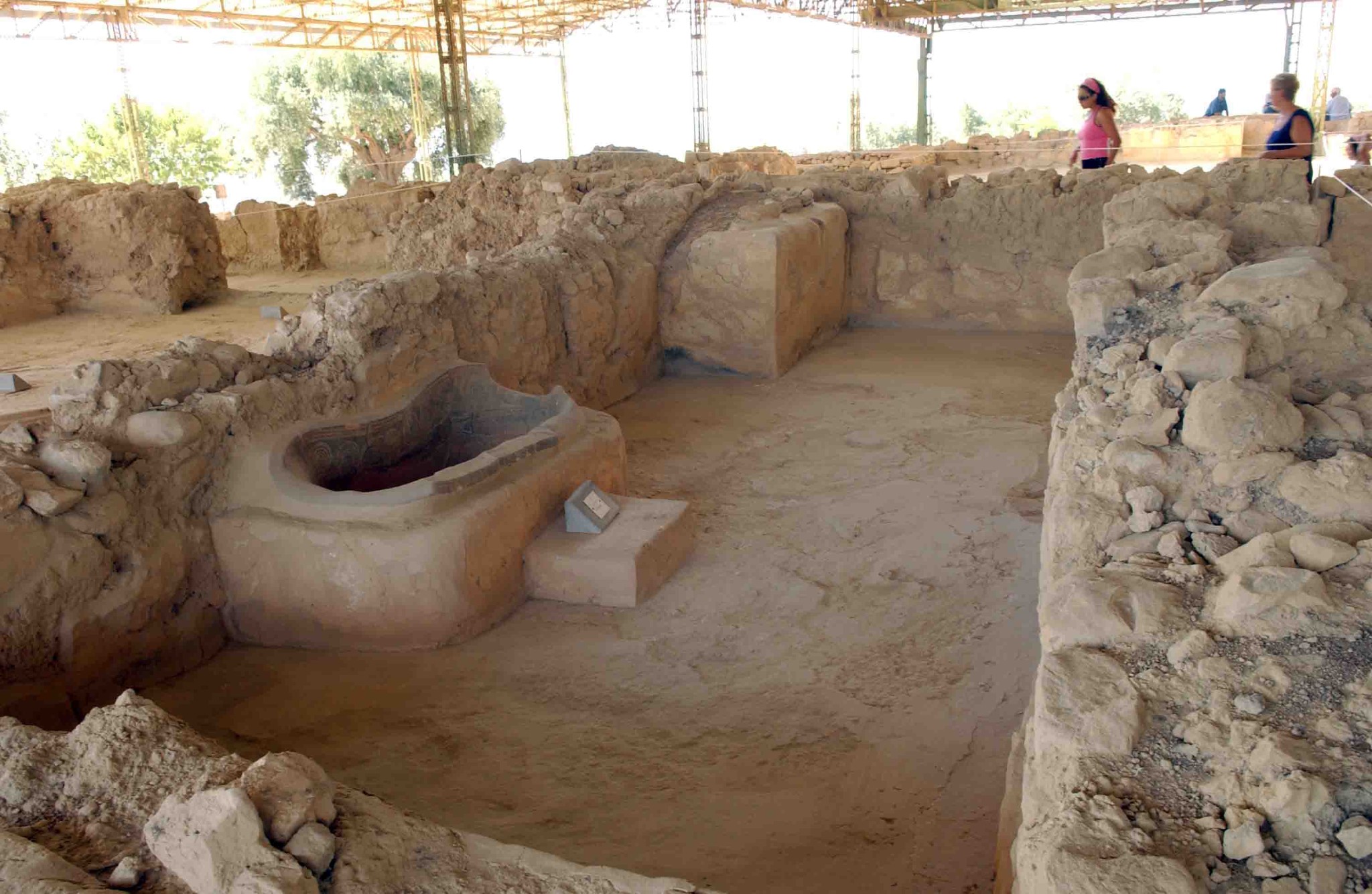Palace of Nestor

The most well-preserved Mycenaean Palace in Greece is located in the area of Pylia and is Palace of Nestor, the famous king of Pylos. It is located 4 kilometers south of the village of Chora on the hill of Epano Eglianos at a distance of 14 km from Pylos. The palace was built in the 13th century BC by King Nestor, son of Neleus, who holds an important position in the Homeric epics. Nestor led Pylos to the Trojan War with 90 ships and is presented by Homer as a wise old man, whose opinion was always respected by the Achaeans.
The first investigations to identify the Palace of Nestor started in 1888 by Heinrich Schliemann, who was not able to detect it. The time for the big breakthrough came in 1939 by Konstantinos Kourouniotis, who along with Carl Blegen conducted intensive excavations until were brought to light the first findings of the palace. Although most of the palace has already come to light, investigations are still going on today, with the participation of the University of Cincinnati, of USA.
From these excavations came to light over a thousand plates from the archives of the Palace of Nestor, with texts in Linear B, which were deciphered in 1952 by Michael Ventris, an architect, and John Chadwick, a linguist. Thanks to them, we are able to know a lot of important information for the daily life, as well as the economic and commercial activities of prehistoric Pylos.
The Palace of Nestor occupies an area of 170 x 90 meters, consists of three main distinct wings, which in their turn are divided into 105 apartments. The large rectangular “throne room” with the circular fireplace, the bath with the ceramic tub and the numerous storage vessels are considered the most important ones.
The southwestern building was named the “Palace of Neleus” and seems to have been built before the construction of the main building, but it remained in use throughout the 13th century. The main building is considered to be the palace of Nestor. The big official throne room is of dimensions 12.90 x 11, 20, with to 4 or 6 interior columns to support the roof, traces of a clay fireplace with a diameter of 4 m and a height of 20 cm and the place of the royal throne.
The Palace of Nestor was almost completely destroyed by a great fire in the late 13th century BC or early 12th century BC and was never rebuilt.
The numerous archaeological findings from the site of the Palace of Nestor are kept at the Archaeological Museum of Chora, as well as the Archaeological Museum of Messenia, which is located in Kalamata.


